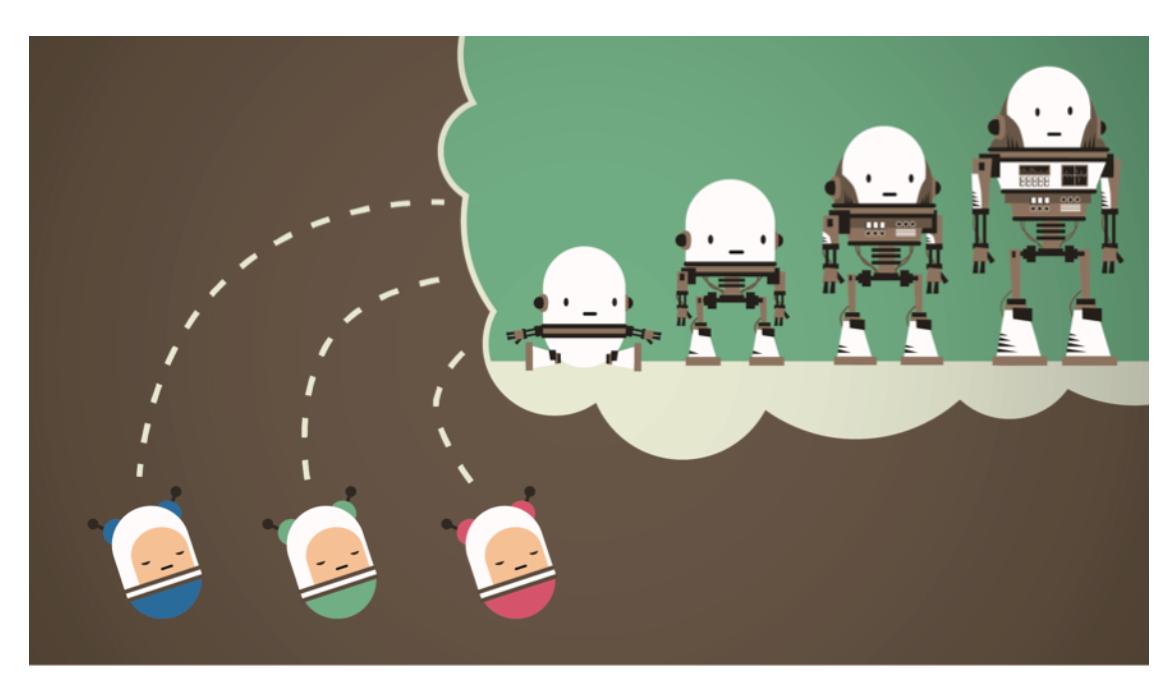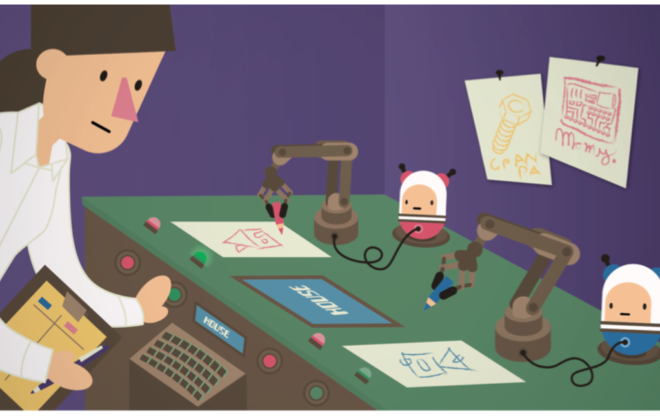How insights from the way the brain learns can be used to design adaptive learning mechanisms for AI that include both phylogenetic and ontogenetic aspects.
So far, in this blog, I have presented a framework of hierarchical adaptations as a way of understanding the brain that is different from that of classical computational theory. Here I discuss how these insights from the brain can be applied to developments of AI.
When it comes to AI founded in hierarchical adaptations, the hardest part to develop are the adaptation rules at the very bottom of the hierarchy. These are the rules that drive slow adaptations. In biology, the slow adaptations occur through expression of genes. Hence, genes contain those rules. Then how do we get the right machine “genes” for AI?
To address this problem, I have envisioned something called AI-Kindergarten and here is how it works.
AI and the un-explainable
Imagine a situation in which a Machine Learning engineer has just created an amazing new deep learning neural network. The engineer may be asked by a curious fellow: “How does your invention work?”. One may be surprised to know that Machine Learning engineers cannot give full answer. They don’t know. There is of course a part that they can explain. But then, there is always a part that remains mysterious.
There are many things that we humans build and do not fully understand. Not everything is as simple as a bottle opener. Consider an elaborate piece of software. Nobody can predict with 100% certainty how the software will behave when released in the wild. One has to observe. The complexity is just too high for our limited human minds. If it wasn’t the case, there would be no bugs in our software.
Something similar and even more extreme is what Data Scientists and Machine Learning engineers face when building AI solutions. Whatever AI machinery we build, no person can ever fully understand how the resulting machine works. This presents a major challenge. As we attempt to increase the levels of intelligence of our machines, the non-understandable portion becomes even bigger. How does one keep improving technology that gradually becomes less and less comprehensible?
Of course, the strategy is to extract the basic principles. We limit our understanding only to those principles. For example, today we collect data for the machine to learn from (e.g., a set of images of cars and bicycles). The machine then extracts what it needs to distinguish cars from bicycles. This happens without us exactly knowing how the final product works. What we understand are the rules of learning but not the rules by which cars are distinguished best from bicycles.
AI-Kindergarten
If we want our AI to reach even higher levels of intelligence, we may need to give up even more of understanding. Today, a Machine Learning engineer understands to considerable detail the learning algorithm used for training AI. And the engineer then prepares the training data based on this understanding. But what if the AI is so advanced that no human can understand the principles by which it learns? How are we going to create appropriate datasets if we don’t even know how they learn?
This is where AI-Kindergarten comes into the picture. Consider for a moment a real kindergarten. This is where children play and learn. Nobody knows which algorithms kids use for learning. Still, kids somehow manage to learn and become smarter. They graduate from a kindergarten more intelligent than when they walked in. In real kindergarten there are no strict learning schedules as in today’s machine learning datasets. Rather, there are only a few general rules of keeping kids safe, alive and fed. Other than that, teachers and kids just interact.
An AI-Kindergarten is somewhat similar, except that over there one makes robots more intelligent. In AI-Kindergarten there is also interaction with humans and the rules of interaction are also defined only broadly: Whatever happens, humans respond in their human ways. Machines then learn the human way of interacting with the world. There are no structured datasets for training.
Developing both Phylogenesis and Ontogenesis
However, AI-Kindergarten cannot possibly work if it is made as a one-to-one copy of a human kindergarten. An important difference between machines and real kids is that kids arrive into a kindergarten already equipped with an excellent capacity to learn—they have the learning rules stored in their DNA. In contrast, machines do not know how to learn. Machines are lacking the learning “DNA”. Therefore, in AI-Kindergarten, machines also learn their learning algorithms. This means that in AI-Kindergarten, machines improve on a much more fundamental level than kids in real kindergartens. Biologically speaking, all kids need to do is ontogenesis, which is development of an individual who already has all the necessary genes in place. In contrast, machines need to use the AI-Kindergarten for ontogenesis and phylogenesis, that is, to both develop as individuals and to develop the right “genes”.
Consequently, the amount of effort that needs to be put into an AI-Kindergarten far exceeds what the development of a human child requires. The demands in AI-Kindergarten are not only imposed on computation power but also on human teachers. Many individuals will have to watch many robots for many hours and interact with them. This means that an AI graduating from the AI-Kindergarten will have had countless many teachers. Think of thousands or millions of teachers spread throughout the world all of whom have contributed to the training that AI.
But teachers are not all that we will need to make the AI-Kindergarten work. We will also need a lot of robots, thousands, maybe millions. Each robot may interact with humans on one-to-one basis but also, the robots will need to play among themselves. Much like in the real kindergarten, the [trainees] will need to socialize. This is why AI Kindergarten has a virtual playroom—a place for robots to exchange among themselves what they learned from their teachers. After enough iterations between teachers and the playroom and back to teachers and then again to playroom, and so on, the resulting AI will eventually integrate knowledge collected across all the individual teachers.
Developmental ‘Stages’ of AI
AI-Kindergarten also cares a lot about developmental stages. In a real kindergarten you don’t learn to draw an elephant before you learn to draw a circle. And you don’t learn to draw a circle before you acquire the skill of holding a pen in your hand. Similarly, in AI Kindergarten, ontogenetic and phylogenetic stages exist. And this development needs to start much earlier—as early as embryonic and fetal development. One needs first to learn how to make simple twitches of arms and legs before moving them or using them for drawing an elephant. Similarly, one needs to learn to turn the eyes towards a source of light, that is, which in the case of robots means turning their cameras.
In doing that, AI-Kindergarten utilizes the fact that our ontogenesis closely follows our phylogenesis. This means that robots subjected to AI-Kindergarten go back and forth between making changes at the “gene” level and then using them for development, and then going back to the gene level, and so on.
Furthermore, sleeping time is an important part of a human kindergarten. Kids require sleep for their developments. So do robots. AI-Kindergarten gets robots regularly to sleep and, particularly, makes them dream. Again, much like their development, robotic dreams too alternate between phylo- and ontogenetic dreaming. This means that robots do not only confabulate new crazy events like humans do to assist better development. Robots also confabulate whole new crazy lives to help develop better genes.
 Figure 1: In a real kindergarten sleep is important for children’s development. The same applies to AI-Kindergarten.
Figure 1: In a real kindergarten sleep is important for children’s development. The same applies to AI-Kindergarten.
Notably, AI-Kindergarten is not a Sci-Fi idea. To the contrary, AI-Kindergarten is a technical invention. It is meant as a device that endows intelligence to robots without humans necessarily knowing how it all works. You can obtain more technical information about AI-Kindergarten by watching this video or by reading this document.
This is a part on the blog series on the theory of hierarchical adaptations (aka, practopoiesis) by Danko Nikolić. To see the entire series, click here.


















